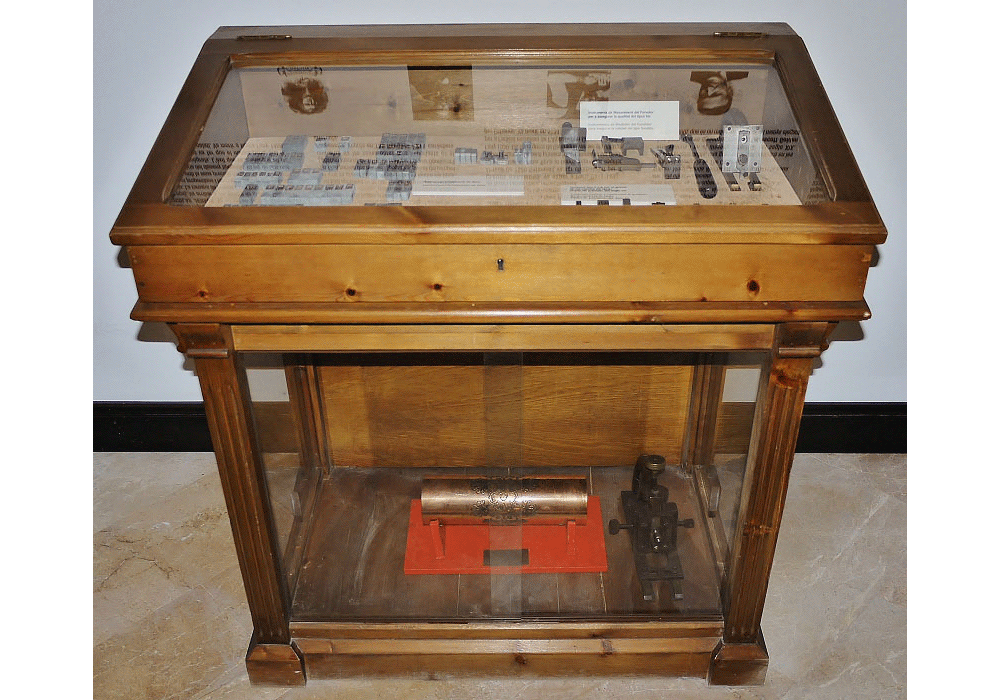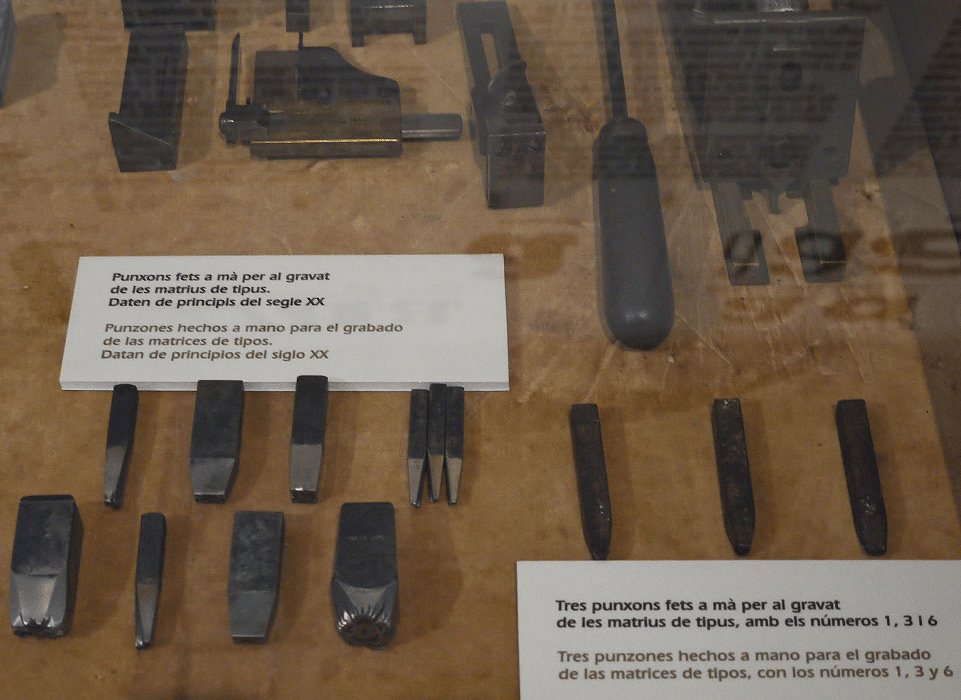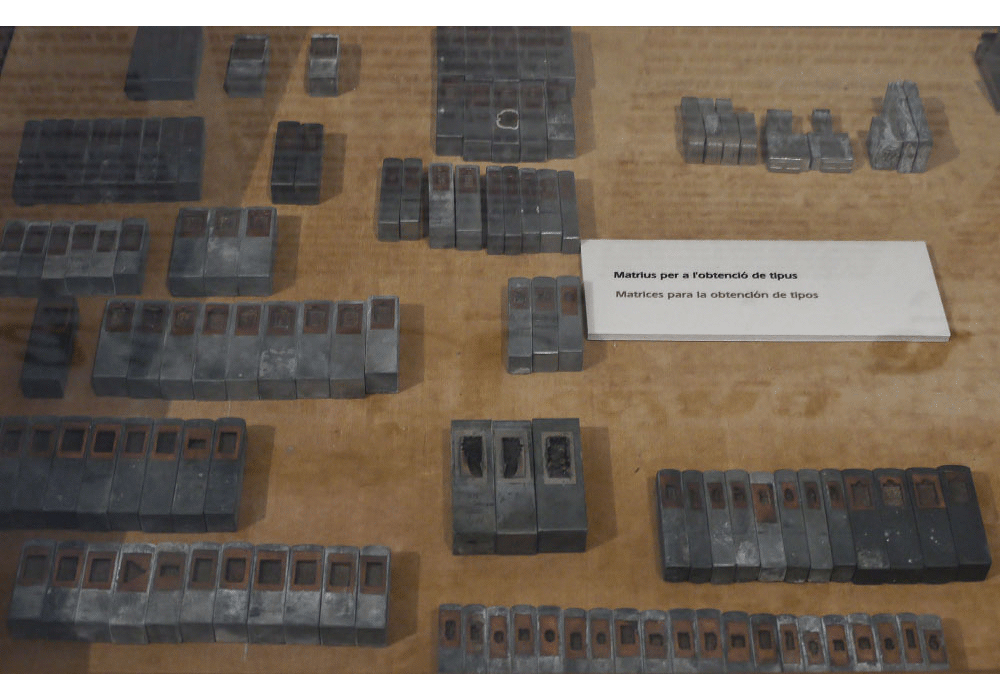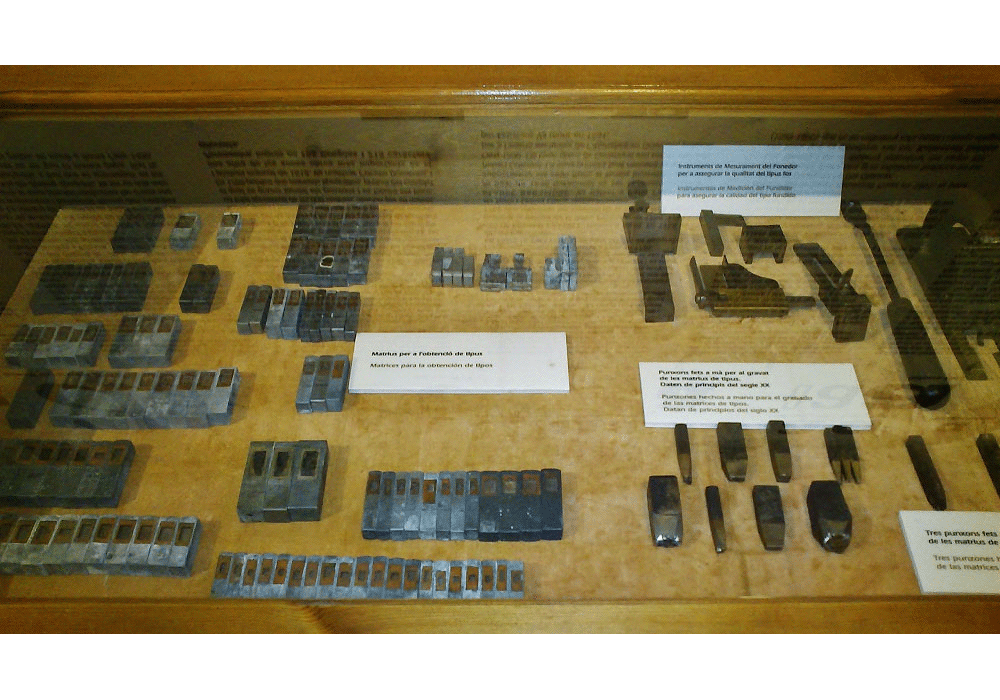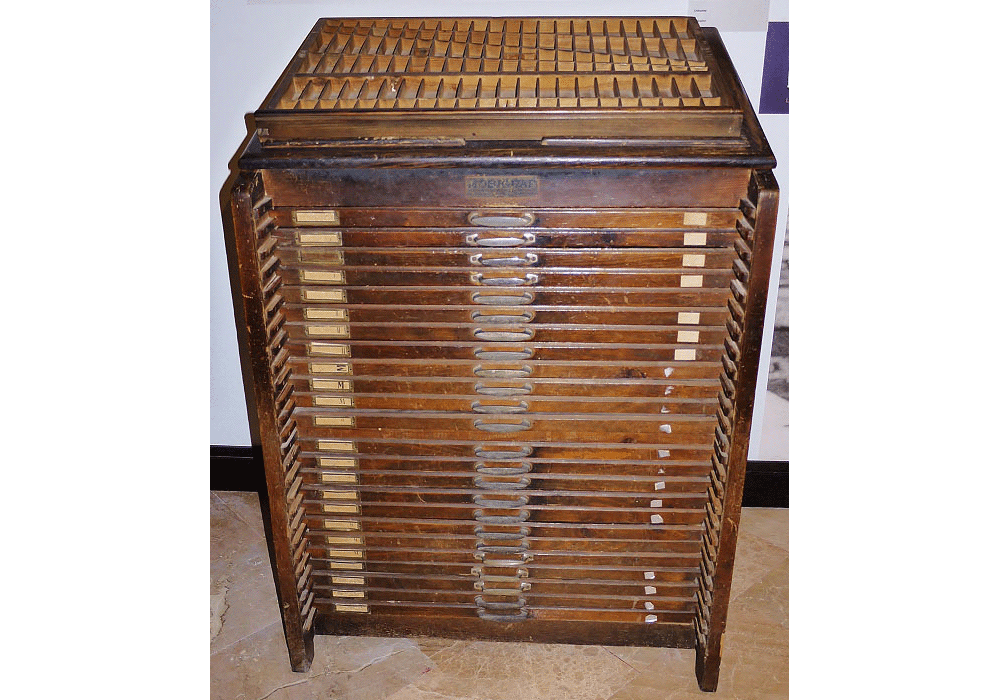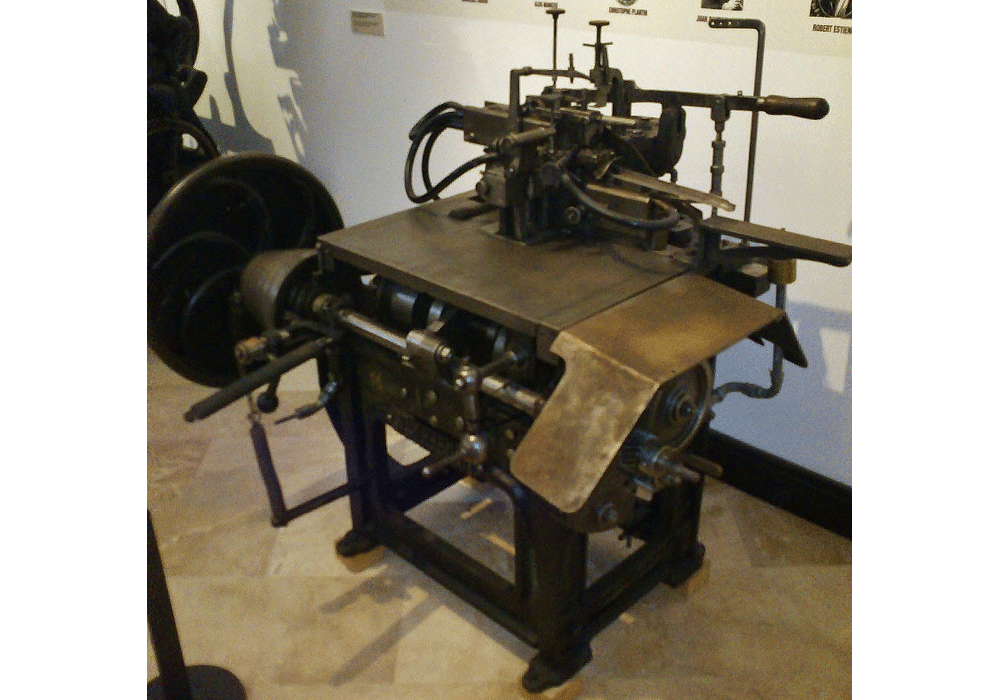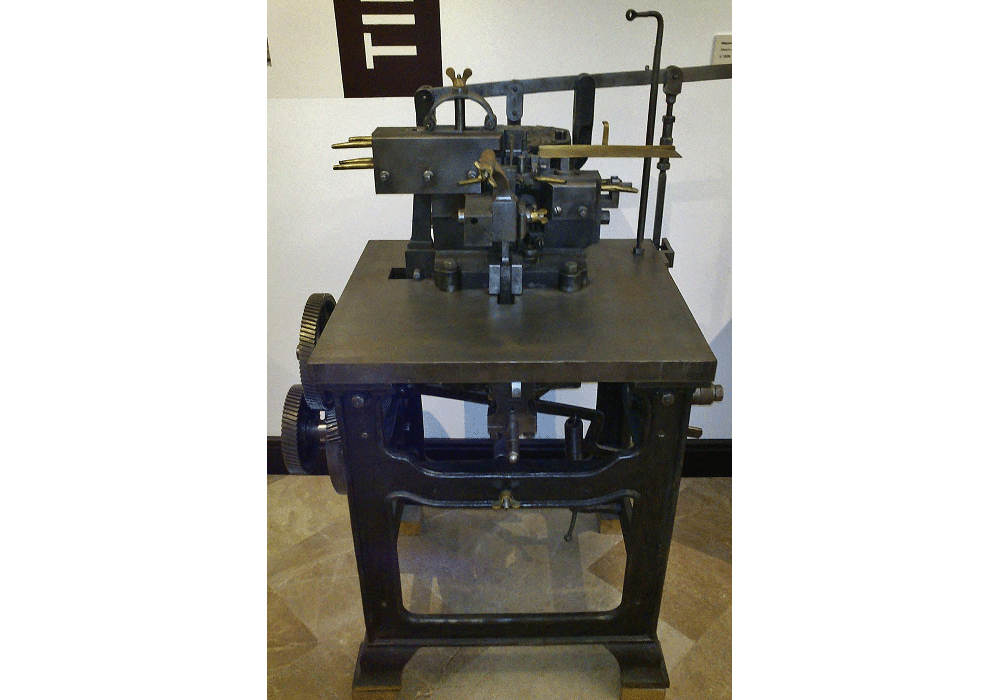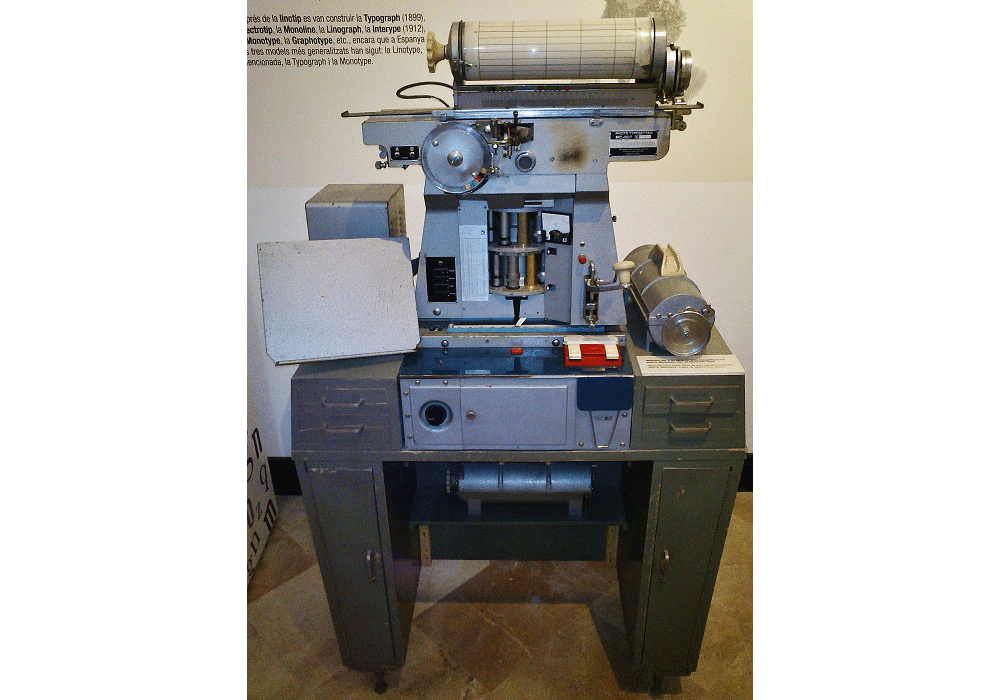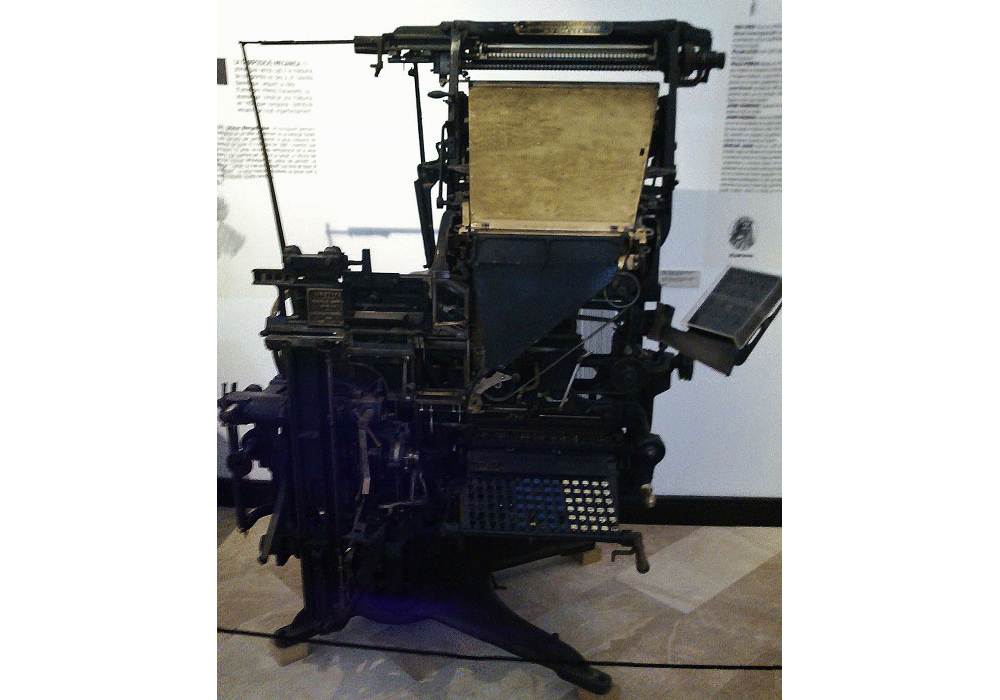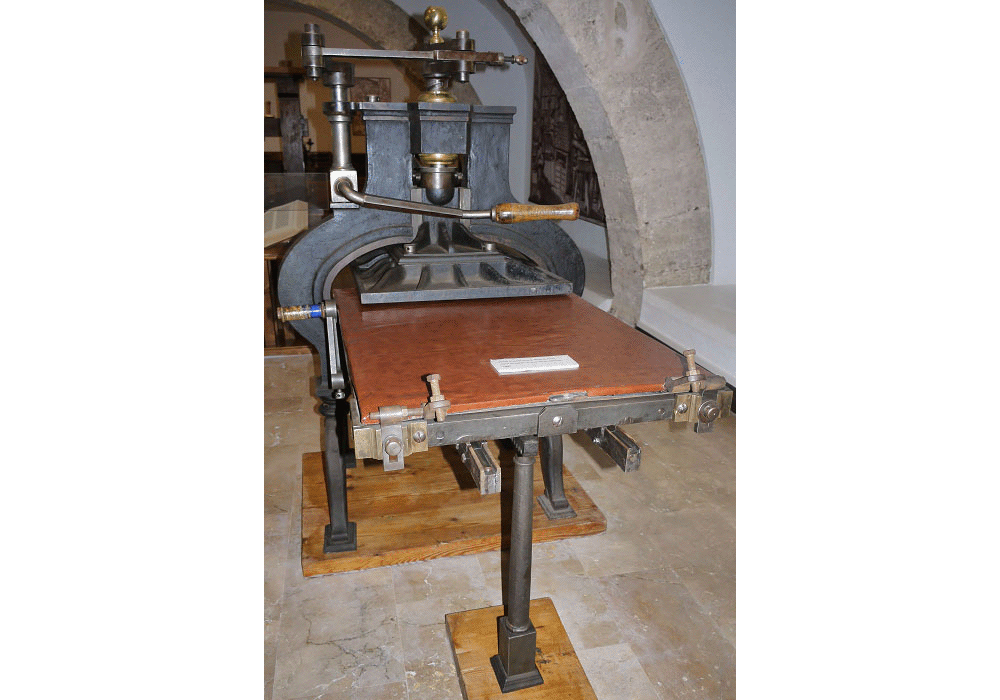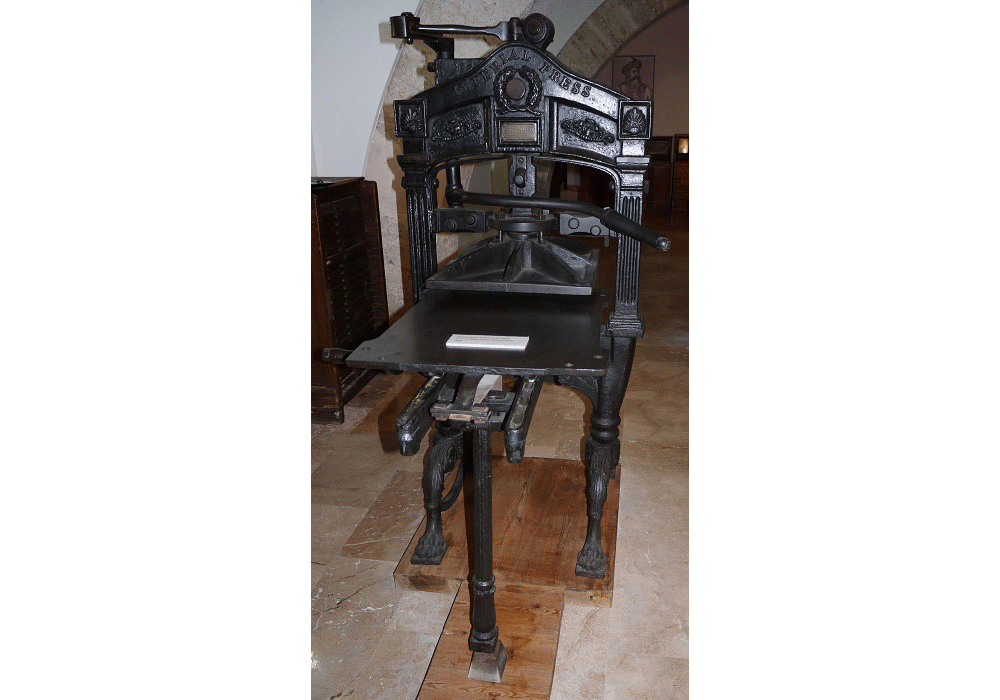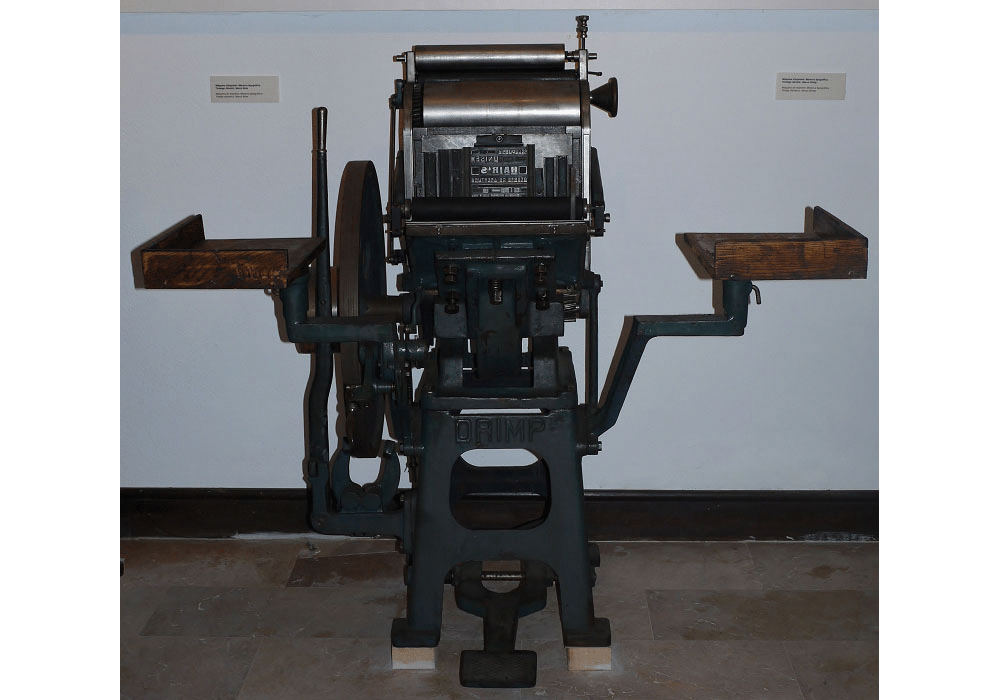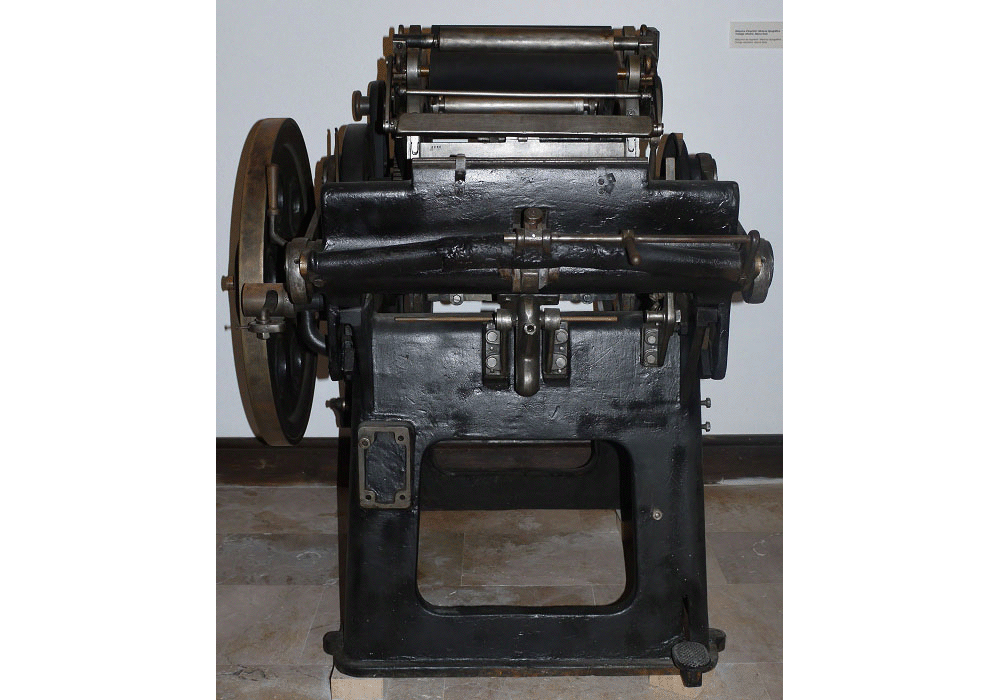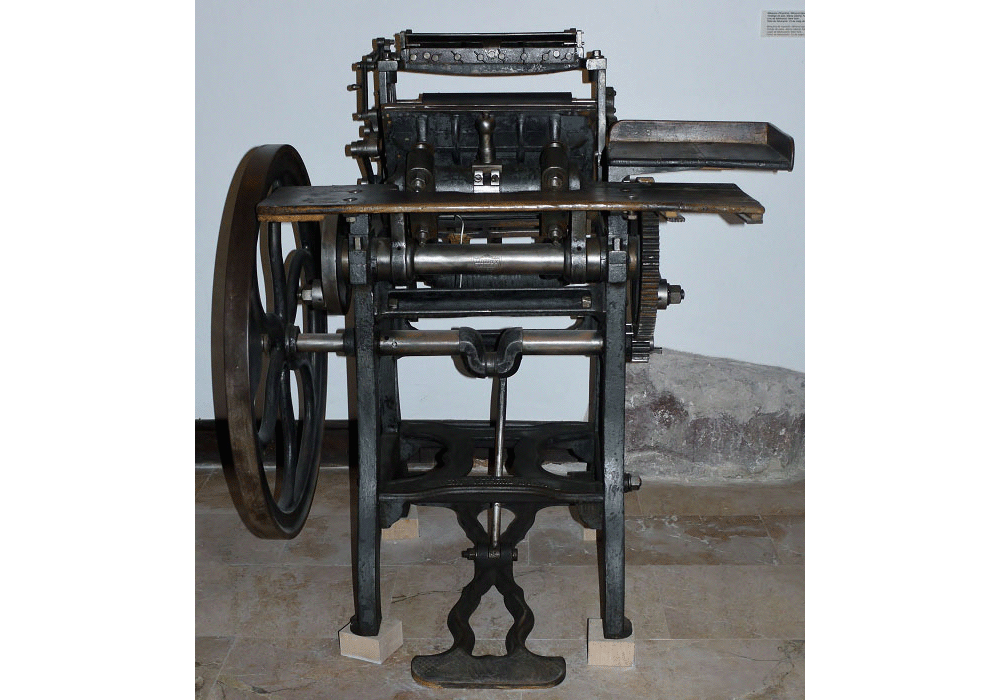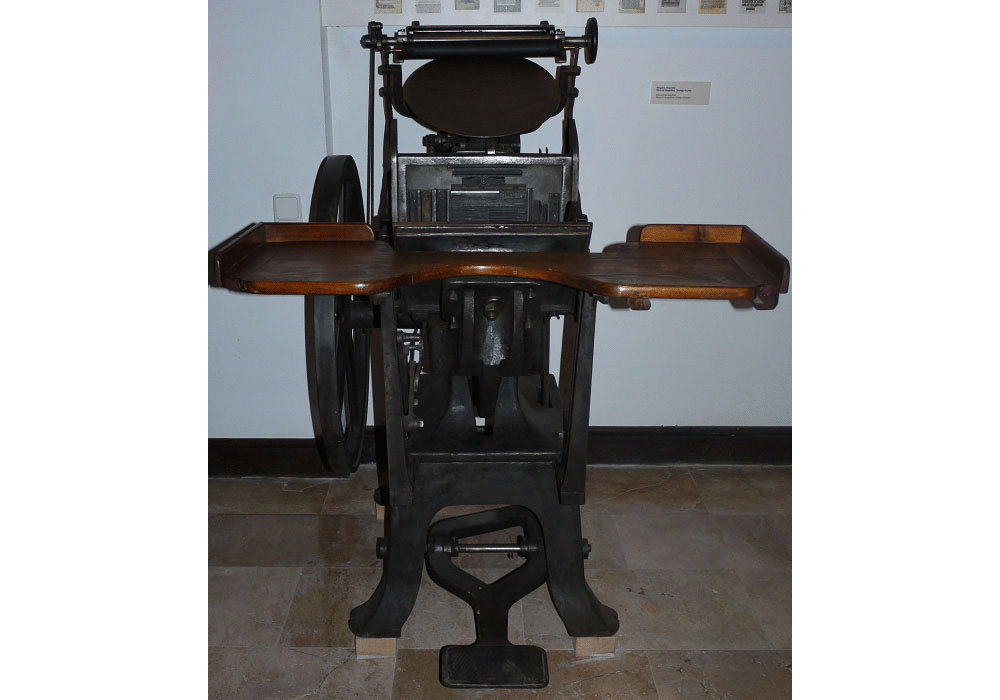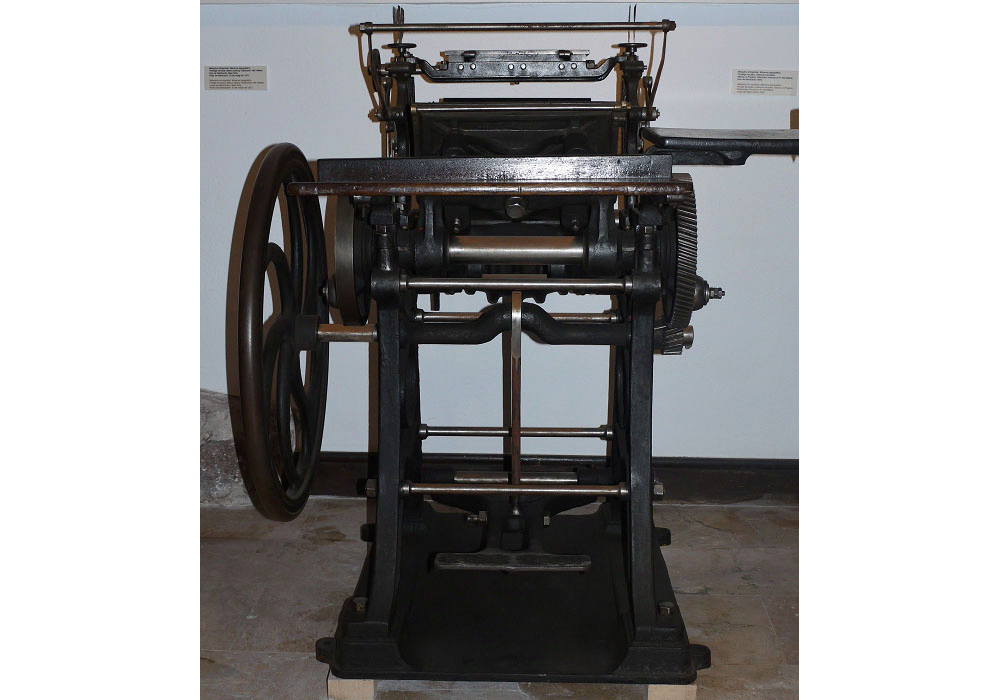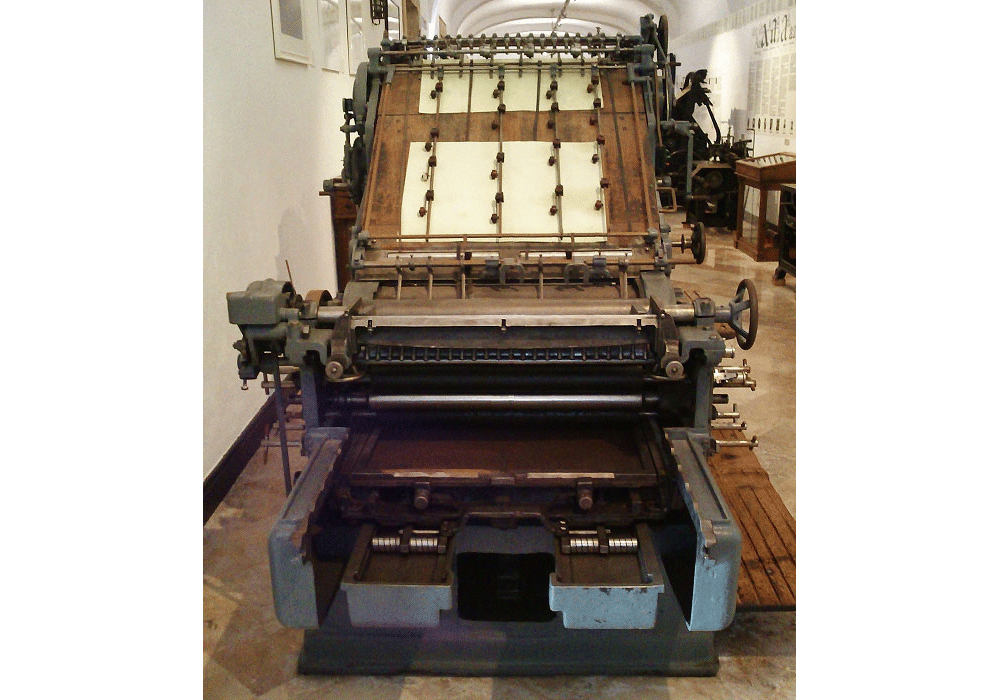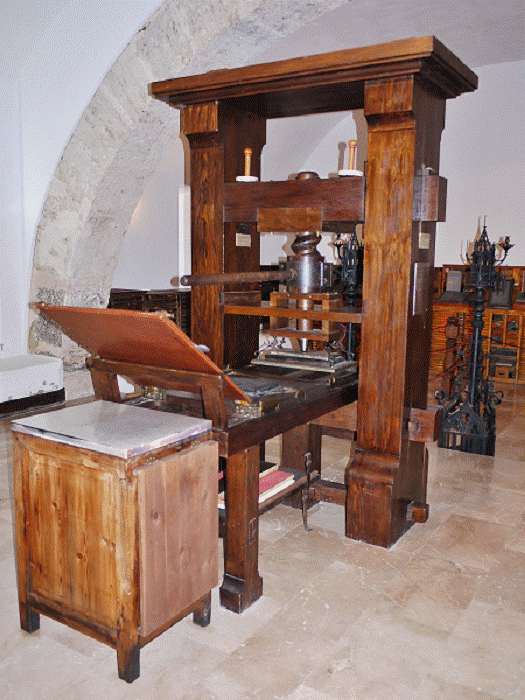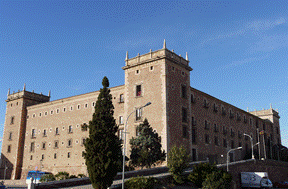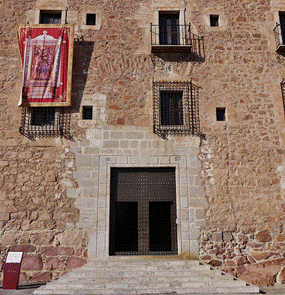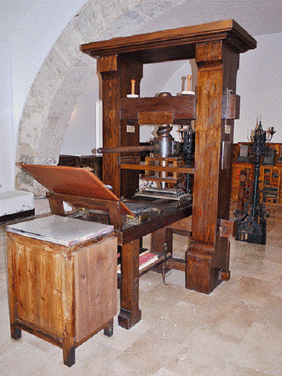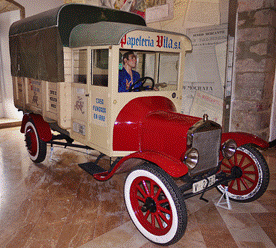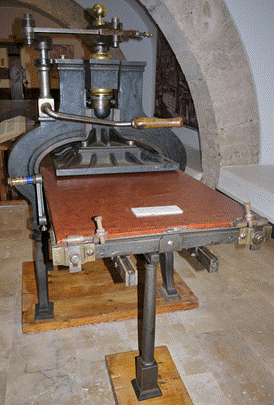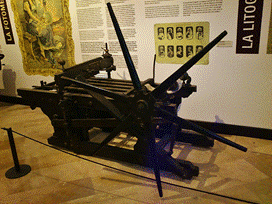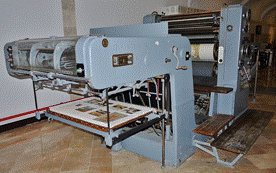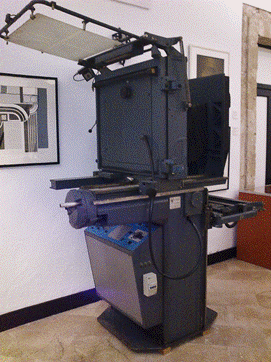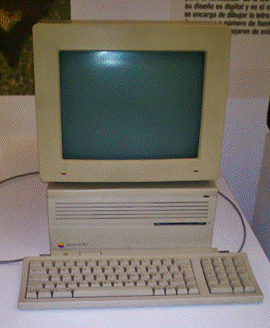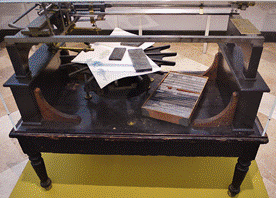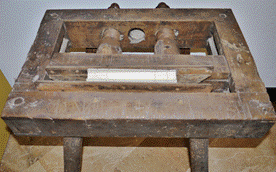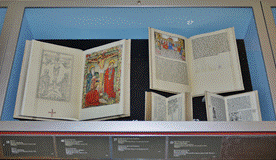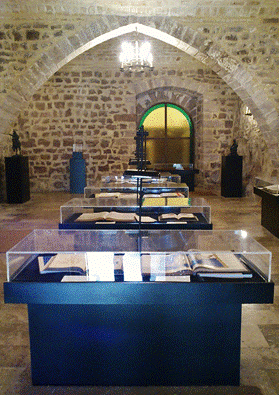|
|
|
| Seguir @vicentgarciaedi Twittear |
|
vgesa |

|
|
|
National Print Museum of Spain. El Puig (Valencia) Founded by Ricardo J. Vicent, with the collaboration of Vicent García Editores |
||
|
Typesetting. This consists of organising the necessary characters (letters, numbers and symbols) to form words, lines, pages and, eventually, volumes. The original is placed on the box or tray, or on a suitable stand, the typesetter stands in front of it without supporting himself anywhere, so that his right hand can move in all directions when picking up the characters. Techniques for typesetting texts did not change in any way from Gutenberg to the late 19th century. Typesetting and distributing the boxes was still a slow, costly process. In the mid-19th century presses could produce a high number of copies per hour, but each letter of each work or publication (book, newspaper or magazine) had to be placed by hand. Modern foundry. The first patent for a foundry typesetting machine was registered in 1825. Until the mid-19th century when David Bruce and Brandt invented the first foundry press, the characters were placed using the primitive, manual process. The first hint of success for a typesetting machine came in 1870 when Charles Kastenbein invented a mechanism with a quadruple keyboard, which was used at the London Times until 1908. Foundry presses reached normal production of 12,000 prints per hour, with some special models reaching 60,000. These improvements enabled the industrialisation of what was at first merely a craft. In 1885, Jacobo de Neufville installed what was the most important industrial foundry press in Spain. Mechanical typesetting: This is in no way inferior to manual typesetting. A book can be prepared with the same perfection using either procedure. However, mechanical typesetting offers two main advantages. The first is that each publication is printed with completely new characters, without losing the sharpness and quality produced by the continuous use of movable characters as they have been forged especially for this purpose. The second advantage is to be able to compose the entire book at once, making it easier to save its pages for reprints, which is not possible when using movable characters as the high price does not allow for such a large reserve of types to enable them to be immobilised. Photosetting: Uses photographic methods to compose texts and emerges practically in the mid-20th century. Based on the same principles as the typesetting machines described, two photosetting machines were developed. The essential difference between one type and the other is that lead is replaced in the linotype by film. |



